 Image search results - "matsuri1" Image search results - "matsuri1" |
|
|

Tekomai geisha lead the way for a float at Kawagoe Festival.
|
|
|
|

Nagahama Hachimangu Shrine torii on New Year's Day. Nagahama's most popular shrine for New Year's worship (hatsumode). MAP
|
|

New Year's prayers amid snow.
|
|

Floats at night, Kawagoe Festival.
|
|

Musical battle between floats.
|
|
|
|

A real crowd pleaser.
|
|

Toka Ebisu, Imamiya Ebisu Shrine, Osaka
|
|

Sumo tournament at Fukuoka Kokusai Center in Nov.
|
|

Chichibu Night Festival climax
|
|

Tekomai geisha from Tomioka Hachimangu Shrine walk toward the stage.
|
|
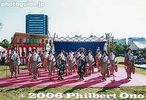
Tomioka Hachiman Tekomai geisha perform at Kiba Park.
|
|
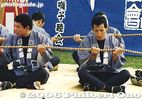
Kiba Kiyari Nembutsu. They hold and rotate a giant rosary while chanting. 木場の木遣念仏
|
|

Fukagawa Chikara-mochi is traditional entertainment spawned by warehouse workers in Sagacho (near Kiba), Tokyo during the Edo Period.
|
|
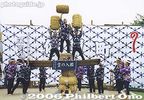
As one man lies at the bottom, everything is piled up on him. They even swayed the boat.
|
|

Asahi Honen Taiko Odori dancers and Mt. Ibuki in Maibara, Shiga.
|
|
|

Asahi Honen Taiko Odori dance in Maibara, Shiga.
|
|
|
|

During the weekend of Oct. 24-25, 2009 on Yume-Kyobashi Castle Road near Hikone Castle, the mascot character festival was held amid product PR booths. ゆるキャラ ふれあい物産展
|
|

Kabuki-like
|
|

Sagawa family of mascots from Sagawa Art Museum in Moriyama, Shiga.
|
|

Official mascots of Maibara, Shiga Prefecture. A pair of fireflies.
|
|

Hiko-nyan is the most popular character, but he was least seen and not available to the public. No one could get close.
|
|

The Azai sisters. On the left is Chacha-hime, based on the eldest daughter Chacha (later Lady Yodo-dono) of Lord Azai Nagamasa and Oichi (sister of Oda Nobunaga) who lived in Odani Castle in Kohoku-cho. Middle is Hatsu, and Go on the right. 茶々姫
|
|

Hikone Gun Battalion dressed like Ii Clan samurai with their trademark red armor nicknamed "Red Devils."
|
|

Ii clan warriors
|
|

The matchlock guns make a huge bang.
|
|

Fireman's ladder acrobatics
|
|
|
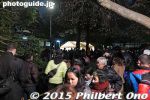
On New Year's Eve, Gotokuji temple allows people to ring the temple bell to ring out the old year in a ceremony called Joya-no-kane.
|
|
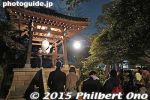
Gotokuji's temple bell on New Year's Eve.
|
|

Chiyoda Line running at 3 am on New Year's morning with these ladies who gave New Year's prayers at a shrine.
|
|

Asakusa Hagoita-ichi Battledore Fair, Dec. 17-19
|
|

Asakusa Hagoita-ichi Battledore Fair, Dec. 17-19
|
|

Asakusa Hagoita-ichi Battledore Fair, Dec. 17-19
|
|

Battledore
|
|
|
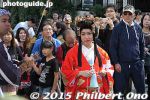
Daimyo's wife is one of the main characters in the procession.
|
|
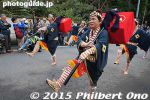
Hakone Daimyo Gyoretsu Procession on Nov. 3
|
|
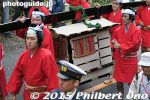
Daimyo's palanquin, however, I don't think anyone was in it. They never opened it.
|
|
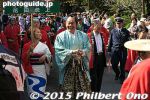
Hanada Masaru, former Yokozuna Wakanohana acting as the daimyo lord at Hakone Daimyo Gyoretsu
|
|
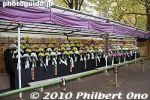
Tokyo Chrysanthemum Show in Hibiya Park.
|
|
|
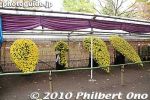
Chrysanthemum Show in Hibiya Park, Tokyo.
|
|
|
|

These men are the luggage carriers carrying the hasami-bako boxes containing clothing and other necessities. Hakone Daimyo Gyoretsu. 挟み箱
|
|
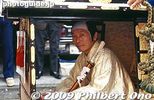
The daimyo feudal lord in Hakone Daimyo Gyoretsu Procession.
|
|
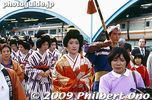
She was definitely the focal point of the procession before they started using a celebrity to play the daimyo. They past Yumoto Station in the background in the Hakone Daimyo Gyoretsu Procession.
|
|
|
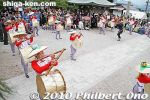
Ibukiyama Taiko Odori Dance, Maibara, Shiga.
|
|
|
|

Ibukiyama Taiko Odori Dance 2010 video.
|
|

Dec. 23, 2004 at 8:30 am: Across the street from the Imperial Palace. Dec. 23 and Jan. 2 are the only two days when the general public is allowed to enter the palace to greet the Emperor and his family.A visit to the Imperial Palace by the general public is called "ippan sanga" in Japanese (一般参賀).
On the Emperor's birthday, the Imperial Palace can be entered only at certain locations. You have to find out where they are and stand in line there. Just go near the Imperial Palace and ask a policeman where you can stand in line. You otherwise cannot enter the grounds. The huge, graveled plaza where you can see Nijubashi Bridge is closed off by police.
While standing in line here, we received free paper Japanese flags.
|
|
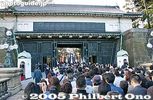
On Nijubashi Bridge heading for the Seimon Gate. 正門
|
|

9:40 am: Inside the Imperial Palace. This is called the Kyudentotei. It is a large plaza in front of the palace.
|
|

Filled on our right
|
|

The Crown Prince, the Emperor, and the Empress on the Emperor's Birthday. They were on the balcony for a whole THREE minutes. I thought they would stay there for at least 10 min. Barely had time to mount my telephoto lens.
|
|
|
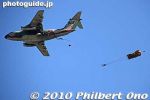
Kawasaki C-1 for a parachute drop at Iruma Air Show in Saitama.
|
|
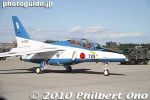
Blue Impulse Kawasaki T-4
|
|
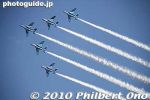
Blue Impulse Aerobatic Team at Iruma Air Show.
|
|

This Tack Cross has one jet flying straight while the other is spiraling around it. Quite spectacular.
|
|

Kobe Luminarie's Frontone (フロントーネ) in Dec. 2018.
|
|

Kobe Luminarie's Galleria Coperta (ガレリアコペルタ). This road is lined with luxury brand shops.
|
|

Flanked by twin Pisa-like towers, the center had the Cassa Armonica (カッサ・アルモニカ), a bandstand used as a place where people could toss money.
|
|

The Usokae Festival is held every January at the Kameido Tenmangu (Tenjin) Shrine. "Uso" means bullfinch, and "kae" means to change. The bullfinch is a symbol of good luck, and uso can also mean "lie." People replace their wooden uso dolls believing that the previous year's bad luck was a lie, to be exchanged for good luck in the new year with the new uso doll.
|
|
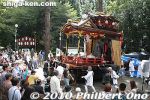
The float is about 5.6 meters high. Maibara Hikiyama Matsuri, Shiga. 壽山
|
|
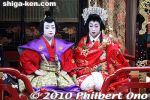
Maibara Hikiyama Matsuri, Shiga.
|
|
|
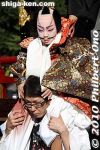
They are carried on the shoulders of a man to a waiting car.
|
|
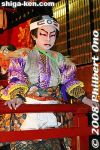
Maihara Hikiyama Matsuri, Shiga.
|
|

Delighted to see a few women archers at Meiji Shrine yabusame horseback archery on Nov. 3.
|
|

Yabusame is a centuries-old Shinto ceremony to pray for peace in the land and rich harvests. The mounted archery is preceded by a Shinto prayer ceremony. It originated with samurai who had to be skillful mounted archers in medieval battles before guns were introduced.
|
|

There's a 210-meter straight horse track within the shrine's spacious grounds. The track has three targets and each horseback archer gallops at full speed and tries to hit each target with an arrow.
|
|

Her arm guard bears her family crest and the sleeve's cuff has a dragonfly that is an auspicious symbol for courage and never retreating or running away. (Dragonflies don't fly backwards.)
|
|

This is Matayoshi Akemi (又吉あけ美). Her long, black hair made her stand out as "A woman archer!" as many exclaimed. They had seven horses that are specially trained for yabusame. Each one has a name. The arrows have blunt wooden tips.
|
|

Her formal yabusame kimono (yoroi hitatare 鎧直垂) is light blue. Her left side is covered with a black arm guard (igote 射籠手) to make it easier to shoot the arrow. On her left side, she also wears a tachi sword and the shorter dagger (maezashi 前差し). Right above her forearm, you can see a coil of spare bow string (tsurumaki 弦巻).
|
|
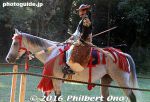
On her legs is a summer pelt of deer fur (muka-baki 行縢). It supposed to cushion any fall from the horse. Fortunately, no one fell off the horse this day.
|
|
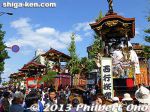
Otsu Matsuri floats at Chuo-dori
|
|

Otsu Matsuri floats
|
|
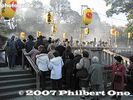
Large way going to the graves of the 47 ronin masterless samurai at Sengakuji temple. 四十七士墓所
|
|
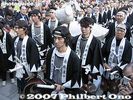
Gishisai: Kira's head strung on a spear is brought to Sengakuji temple.
|
|

Daidogei World Cup in Shizuoka at Sumpu Park
|
|
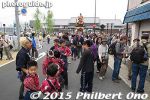
Sawara Autumn Festival held in Oct. in Katori, Chiba. Shonanko (Kusunoki Masatsura) float from Shimowake 下分 in front of JR Sawara Station.Shimowake 下分
|
|

Shonanko (Kusunoki Masatsura) float from Shimowake 下分 in front of JR Sawara Station.
|
|
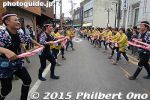
Sawara Autumn Festival in Katori, Chiba. Float pullers/dancers shout "wasshoi" at Chinzei Hachiro Tametomo float from Kaminakajuku 上中宿.
|
|
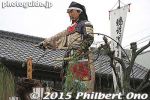
Dainanko (Kusunoki Masashige) float from Higashi Sekido 東関戸.
|
|
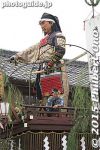
Sawara Autumn Festival in Katori, Chiba. Dainanko (Kusunoki Masashige) float from Higashi Sekido 東関戸.
|
|
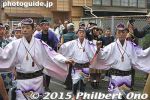
Sawara Autumn Festival in Katori, Chiba. Ushi Tenjin float from Shin-Uwagashi 新上川岸.
|
|

The bonfire is used to burn about 100,000 goma prayer tablets collected from all over Japan. Tarobogu Shrine, Higashi-Omi, Shiga.
|
|

The fire's spiritual force supposed to ward off evil, accidents, and sickness and cleanse you. Tarobogu Shrine, Higashi-Omi, Shiga.
|
|
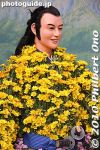
Sakamoto Ryoma chrysanthemum doll at Yushima Tenjin Shrine, Tokyo.
|
|
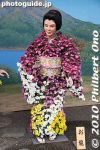
Very well done, and it makes this chrysanthemum festival unique. Yushima Tenjin Shrine, Tokyo.
|
|
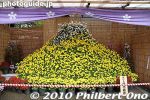
Chrysanthemums shaped like Mt. Fuji. Capped by white flowers for snow. Yushima Tenjin Shrine, Tokyo.
|
|
|
|